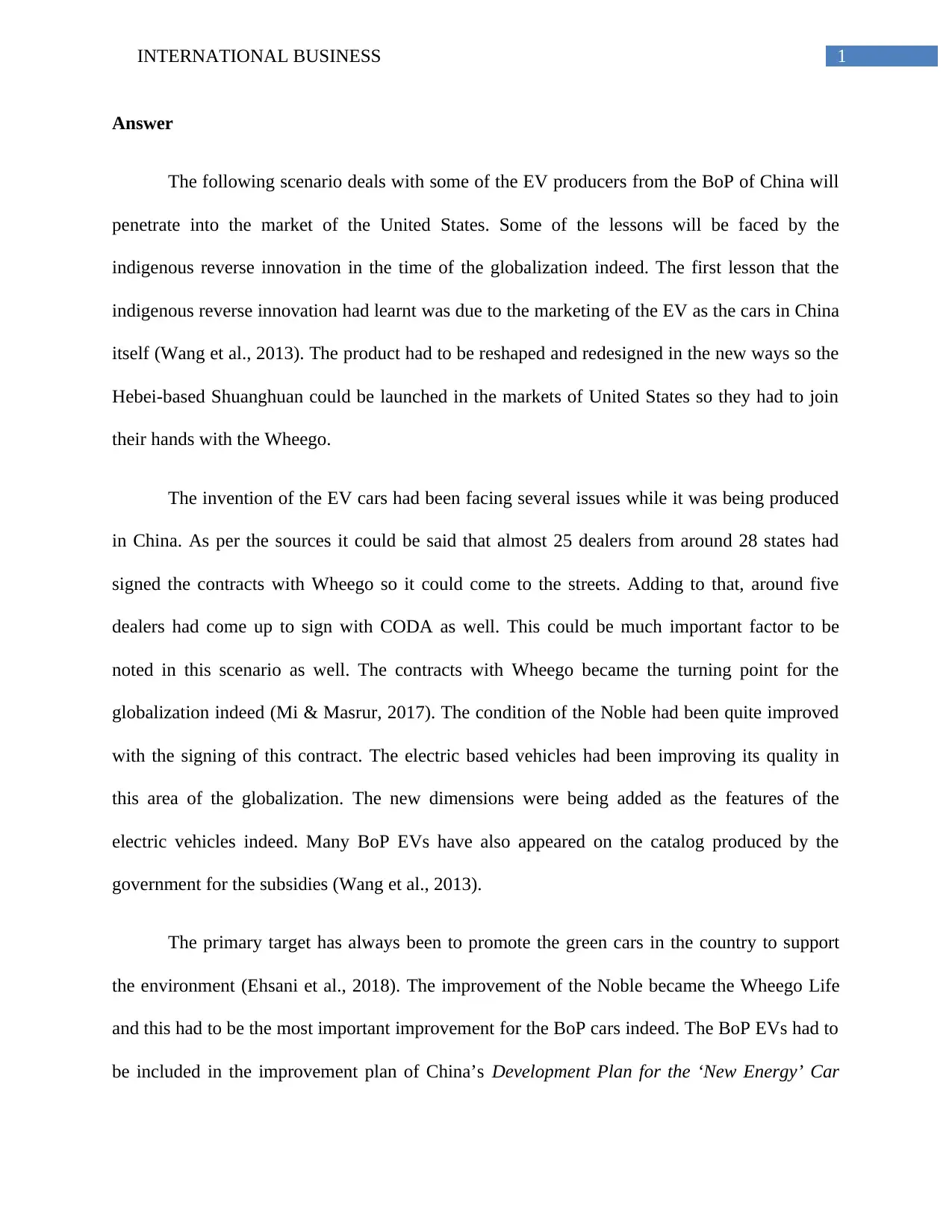International Business: Expansion of Chinese EVs in US Market
VerifiedAdded on 2023/05/29
|4
|628
|372
Report
AI Summary
This report examines the international business strategies of Chinese electric vehicle (EV) manufacturers as they attempt to penetrate the United States market. It explores the challenges and opportunities, including the need for product adaptation and the role of reverse innovation. The report discusses the importance of partnerships, such as the one with Wheego, and the impact of government subsidies on market entry. It analyzes the evolution of EV models, like the Noble, and their improvements to meet market demands. The report also highlights the significance of addressing traffic congestion and promoting green technologies. The study references several academic sources to support its findings, providing a comprehensive overview of the topic and its implications for the automotive industry and the broader context of globalization. The report also mentions that the government is supporting the sales of EVs to promote environmental sustainability. The report concludes that the expansion of the EV market is promising.
1 out of 4






![[object Object]](/_next/static/media/star-bottom.7253800d.svg)